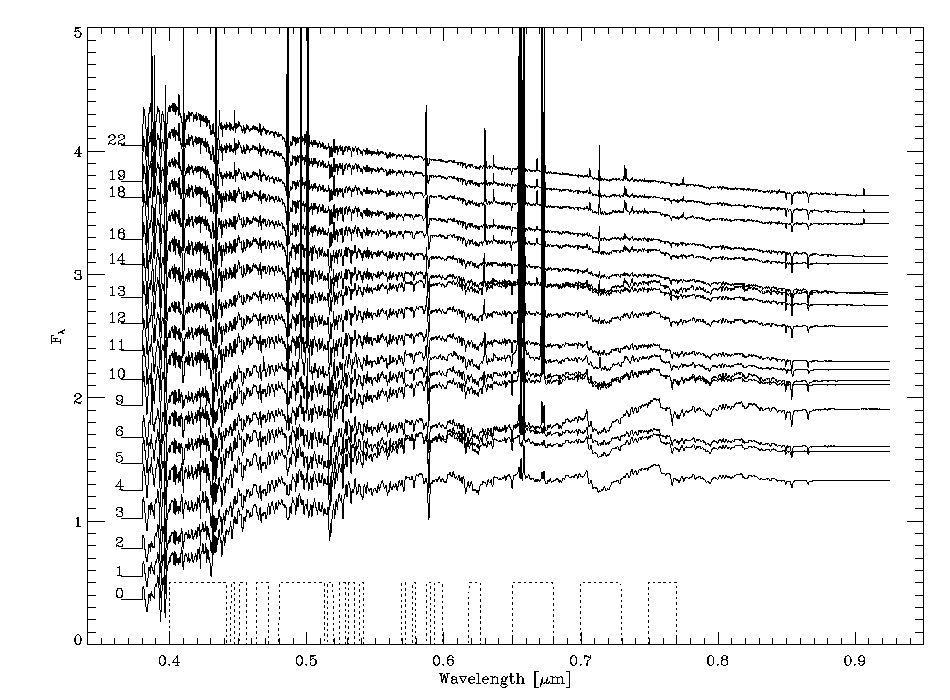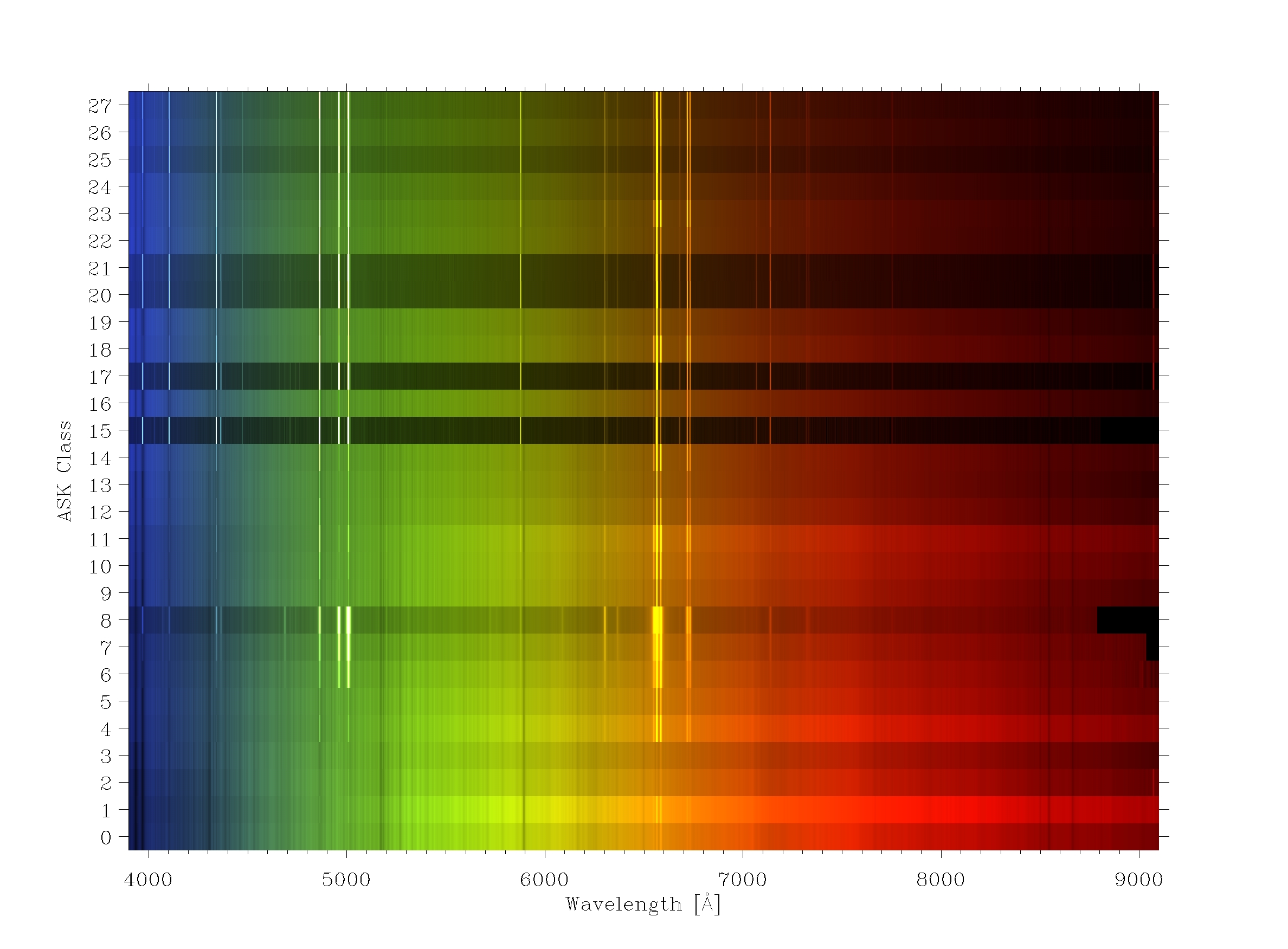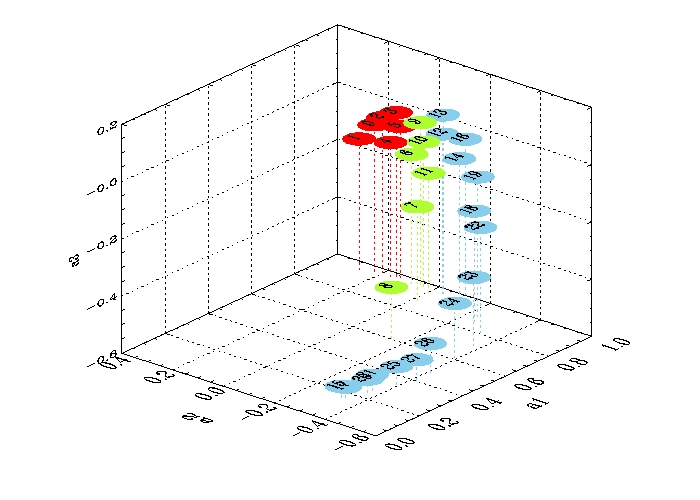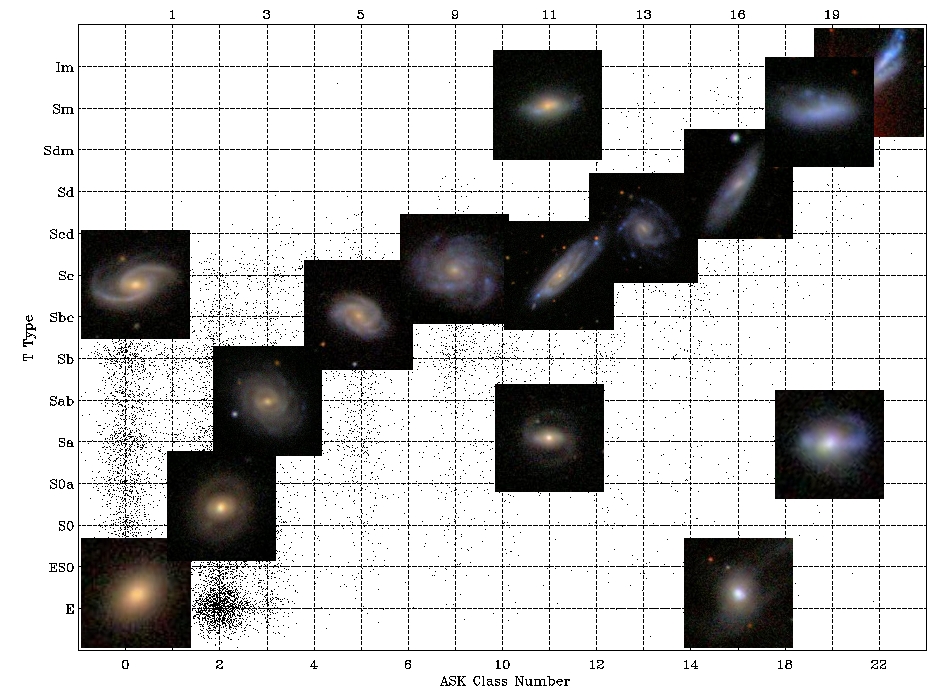ASK: Automatic Spectral K-means classification of Galaxies

A brief description of the project and its application to GTC is described in these viewgraphs (GTC-Consolider meeting, Cadiz, November 2009).
The paper describing the classification can be found in here.
I have set up a public FTP site at the IAC to contain the classification plus some extra explanation,
 ftp://ask:galaxy@ftp.iac.es (it will last 5 years).
ftp://ask:galaxy@ftp.iac.es (it will last 5 years).
In addition, it is already public in the Spansih VO at 
 (same image with templates in ps format here)
(same image with templates in ps format here)
Based on the ASK classes, Y. Ascasibar and I argue in this paper that the galaxy spectra form a 1D family in the multi-dimensional where each wavalength is a coordinate. This 1D family has an extension corresponding to the active galaxies (AGN types). The enclosed figure (fig 8 from the paper) shows the family projected in the three first eigenvalues of the spectra (see Yip et al 2004). The sequence go from red to blue, with the green corresponding to the AGNs

Relationship between Hubble type and spectroscopic class in local galaxies

As it is long known, elliptical galaxies tend to be red whereas spiral galaxies tend to be blue, however, this relationship presents a large scatter. This relationship es quantified for the first time in this paper. We compare the Automatic Spectroscopic K-means based classification (ASK) with most of the commonly used morphological classifications. All of them provide consistent results. Given a spectral class, the morphological type wavers with a standard
deviation between 2 and 3 T types, and the same large dispersion characterizes the variability of spectral classes fixed the morphological type. A considerable fraction of the red galaxies are spirals (40--60 %), but they never present very late Hubble types (Sd or later).
Two of the ASK classes (1 and 4) gather edge-on spirals, and they may be useful in studies requiring knowing the intrinsic shape of a galaxy (e.g., weak lensing calibration).